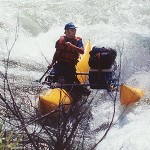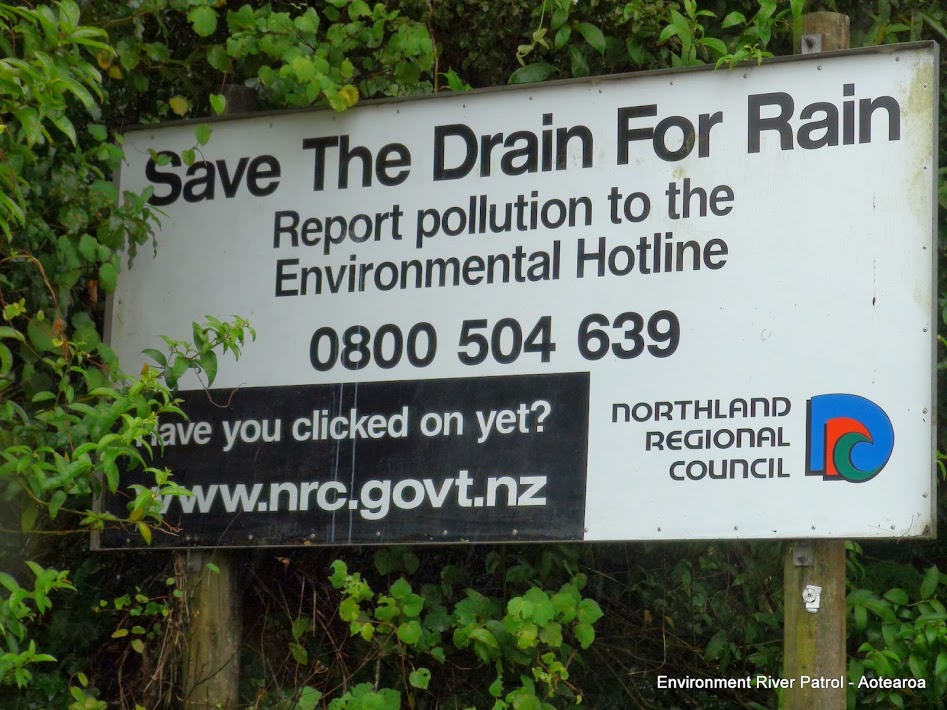Comments Reviews on theboatpeople.com Raft Cataraft Inflatable Kayak Products and Service › Forums › New Zealand Environment River Patrol by Millan Ruka › Cattle in Puketotara (Watercress) Stream) at Puketona New Zealand NRC Report #09
- This topic has 0 replies, 1 voice, and was last updated 10 years, 4 months ago by
 Lee Arbach TBP.
Lee Arbach TBP.
-
AuthorPosts
-
October 22, 2014 at 3:28 pm #2086
 Lee Arbach TBPKeymaster
Lee Arbach TBPKeymaster
22.10.2014
To – Northland Regional Council and far North District Council
Waiora Northland Water, Federated Farmers, Fonterra, DOC, NIWA, WDC, hapuu and stakeholders.
Re: NRC Report #098-29.09.2014 is a follow up (2nd) report to Report #048 sent to NRC 05.03.2014 Cattle continue to pollute the Puketotara (Watercress) Stream, just south on SHW1 Puketona Junction
This NRC Report #098-29.09.2014 is a follow up (2nd) report to Report #048 sent to NRC seven months ago on 05.03.2014. One hundred plus beef cattle continue to pollute the Puketotara (Watercress) Stream) and are causing severe “detrimental effects” downstream at the Waitangi moana and Paihia Beach front.
On 16th Oct 2014 I presented a Power Point presentation and speech to the international Waitaha “2014 International Forum on Water”. Most all of our guests had bathed that morning in the waters of the Waitangi moana as part of ritual to join body and soul with te awa moana. Some photos from this report were (unintended) in my presentation and our international guests (American, Australian, German, Dutch and Japanese) were aghast and saddened that they shared their souls with this same polluted water. We have a thriving cruise ship industry and Paihia still has another 12 ships to arrive this year 2014. They come to swim on our clean beaches and soak up our green image. But on rainy days the sediment, cattle urine and excrement is a health hazard to our own people and a major risk to our tourism industry.
The first 7x of 86X GPS tagged map photos were taken on 29.09.2014 the other 75x photos were taken on 29.12.2013. These can be viewed in the attached Picasa web link provided. Photos will be removed from online by ERP-A, if NRC confirms by GIS that a solution is in place.
NRC has a “duty of care” to all our waterways. The current RMA empowers NRC to remedy this situation.
The farmer(s) is in breach of the “Resource Management Act 1991” Act Section 15 and Act Section 17 ie. Duty to
avoid, remedy, or mitigate any adverse effect on the environment”. NRC has a duty of responsibility to take
appropriate action to mitigate or eliminate the cause of “detrimental effects” to the Puketotara (Watercress)
Stream. NRC should give the farmer two options –
Erect stock exclusion fencing to the riparian of the stream.
Or cease grazing in the paddocks alongside the stream.
* Failure (to remedy in reasonable time) will result in monthly fines
Note that the farmer on the other side of the stream has “fit for purpose”, “Stock Exclusion Fencing” in place.
However the farmer (referred to in this report) has no fencing on his riparian and allows his cattle to drink from
the stream and cross it at will to graze the other farmers riparian buffer strip. This action totally negates the
positive action taken by the neighbour farmer.
1
ERP-A has developed a 39x point Stock Exclusion Reporting Code (SEFRC) that provides a code for farmers to
adhere to, and for NRC and kaitiaki public to report on breaches of the code. NRC has shown no interest in this
code despite declaring that it has “no policy to deal with unfenced cattle”.
FNDC Parking and Traffic control bylaws
WDC Parking and Traffic bylaws 2009
NRC bylaws on cattle grazing ( ie parking) unfenced on our water ways
* Please inform the writer of action, or inaction to this correspondence
naku noa
Millan Ruka
Environment River Patrol – Aotearoa
= 11x pages
= 28x pages
= zero pages.
NRC Report #048 Beef cattle are grazing unfenced to the Puketotara Stream
(Watercress Creek) and causing severe “detrimental effects” to its downstream catchment, the Waitangi moana and Paihia Beach
This report is in regard to a herd of beef cattle severely polluting the Puketotara Stream above the Watercress Creek Bridge on State Highway 1, just south of the Pakaraka Junction. The cattle were grazing unfenced to the stream. It is a regular occurrence and has been so for many years that I recall. This scene can be viewed when driving North or South on highway 1.
On this report occasion 28.12.2013, beef cattle were seen on the edge of the banks of the stream and others were down at the water’s edge. There were approximately 90x (or more) beef cattle in the paddock. On a walk up the stream there was clear and fresh evidence that the cattle were grazing down and into the water and defecating and urinating in it. They regularly cross the stream to graze each bank. From previous paddles in the lower catchment and by satellite maps searches all over indicate, that 100s klm of river and stream riparian in the catchment are fouled by unfenced beef cattle, The pollution they cause, finds its way to the Waitangi moana and Paihia beaches. They have since grazed in the same manner in 2014 and recent.
Although the stream is named as Watercress Creek, its Maori name on maps is known as Puketotara Stream. It was once abundant with watercress (hence its adopted name). However in recent years, it has been regularly sprayed to a point where watercress is almost non-existent in this stretch of water-way near the bridge. Elsewhere, the water is polluted or the cress has been eaten by cattle. This was once a favourite place for the gathering of mahinga kai for local hapu and manuhiri (Maori and Pakeha) up to the mid-2000s, but not of late due to the effects that have been caused in recent years.
The Puketotara Stream starts near Lake Owhareiti (4.8 klm upstream from the bridge) and flows on some 11 klm to then join to the Waiaruhe River. From this point, the Wairauhe flows on some 8.3 klm to then join the Waitangi River just North of Puketona Junction. From here, the Waitangi River flows on some 16.3 klm to then spills over Haruru Falls.. From Haruru Falls it flows 3.1 klm to the Waitangi Bridge and out flows to nearby 2.2 klm of beachs of Paihia. From its source to the Waitangi bridge is approximately 35 kilometres. It is a crystal clear spring/puna stream that is an essential vein to the mauri of the moana. It sustains substantial wetlands swamp not far downstream of the bridge. Tuna and all species of white bait require streams such as this to replenish their lifecycle.
2
Many residents of Paihia have complained over years that cattle are affecting the harbour and beaches with sediment and cattle waste, this stream is one of those sources and the greater catchment would also contribute to this detrimental effect to the moana and beaches.
ERP-A reports are now shortened due to NRC request at our Dec 2013 meeting. ERP-A’s “Stock Exclusion Fencing Report Code – SEFRC “are not included. Researchers have commented – A simple code reporting system is a great idea, this report could then be compared to previous report #033 and benefit other reports by collation of information and note any significant changes.
Beef and Lamb farmers are not signatories of the Sustainable Dairying Water Accord 2013. This leaves a gaping hole in NZs efforts to clean up our waterways. There is no accord or NRC by-laws that say they have to keep their cattle out of our Northern waterways. This report evidence’s breaches of the RMA, but our NRC has demonstrated a lack of will and duty to previous reports on this problem. Most other regional councils have local law in place and implement it to keep “all cattle” out of waterways.
The new proposed NRC policy to consider lower stock numbers on unfenced waterways will be of “no effect”. Cattle will always choose to graze nearer natural/moving water. This policy will do nothing to eliminate or mitigate what is seen in this report and NRC admits it does not have the monitoring resources now, let alone for future policy. Researchers have commented – Policies should give clear direction on how our environment SHOULD be managed, thus NO waterways should be unfenced if stock would have access. Especially when proposing new policies – we’re meant to be learning from past mistakes. If our statutory plans aren’t saying that we must exclude stock from waterways, then there is no hope that all farmers will make a concerted effort to exclude all stock from waterways…and then there is no hope that our waterways and harbours will be clean enough to swim in or collect food from. The Council should be leading the way forward!
73 x Google/Picasa gps mapped photos are provided with this report. Recommend
That NRC contacts the farmer and issue an abatement notice to cease “causing detrimental effects” to the Puketotara Stream.
That NRC instructs the farmer to erect “Stock Exclusion Fencing” if he wishes to continue grazing stock on the riparian of any part of the Puketotara Stream.
Request – That average riparian establishment of fencing to be no less than 8 metres from the water’s edge.
That “independent assessment” be adopted as part of the process to investigate this waterway (and all other in NRC region) for assessment of “stock exclusion fencing”, design type, distance from water-way and public access rights.
* The farmer(s) is in breach of the “Resource Management Act 1991” Act Section 15 and Act Section 17 ie. Duty to avoid, remedy, or mitigate any adverse effect on the environment”. NRC has a duty of responsibility
to take appropriate action to mitigate or eliminate the cause of “detrimental effects” to the Puketotara
Stream.
* Please inform the writer of action, or inaction to this correspondence
naku noa
Millan Ruka
Environment River Patrol – Aotearoa
3-
This topic was modified 10 years, 4 months ago by
 Lee Arbach TBP.
Lee Arbach TBP.
-
This topic was modified 10 years, 4 months ago by
 Lee Arbach TBP.
Lee Arbach TBP.
-
This topic was modified 10 years, 4 months ago by
 Lee Arbach TBP.
Lee Arbach TBP.
-
This topic was modified 10 years, 4 months ago by
 Lee Arbach TBP.
Lee Arbach TBP.
-
This topic was modified 10 years, 4 months ago by
-
AuthorPosts
- You must be logged in to reply to this topic.
- Click to share on Facebook (Opens in new window)
- Click to share on Twitter (Opens in new window)
- Click to share on LinkedIn (Opens in new window)
- Click to share on Pinterest (Opens in new window)
- Click to share on Tumblr (Opens in new window)
- Click to share on Reddit (Opens in new window)
- Click to share on Pocket (Opens in new window)
